Rather than a whimper, summer in Southern California often goes out with a bang, with a heat wave around Labor Day. I’m glad this one is over, as at my place it was 100-degrees or higher for nine days straight. But before putting it in the back of my mind, I want to note some observations and lessons in order to help interpret the results we see in our food gardens and manage next summer’s heat waves, especially September ones.
September vs. June
A couple characteristics distinguish heat waves in September (the end of summer) from those in June or early July (the beginning of summer). June or early July heat waves are felt mostly inland. The beaches usually remain hidden under fog while valleys are blazing at triple digits. In contrast, September heat waves affect our whole region from desert, mountain, valley, to coast.
Also, the days are longer during June and early July, and so the same temperature will cause more damage there in early summer compared to September.
And plants are in different phases of growth in June and early July compared to September. Many fruit trees have just finished flowering and have small, new fruit growing in June and early July; small, new fruit are more sensitive to heat than bigger, mature fruit. Therefore, on the whole, fruit trees need more protection from heat in June and early July than they do in September, given the same heat conditions.
Finally, whereas a hot spell in June or early July marks only the beginning of the season of more potential high heat, September heat waves often finish with precipitous drops in temperatures and the beginning of our fall season. This year, the final day of heat was September 10 at 102, and then September 11 dropped to 89, September 12 was 84, September 13 was 85, and the meteorological forecasts are for temperatures in the 70s and 80s with possible rain showers for the next ten days.
This is not unusual. After the heat wave of September 3-7, 2020, the temperature dropped from 99 on September 7 to 76 on September 8. Yes, a 23-degree drop in one day!
Nevertheless, our entire months of September and October in Southern California can continue to be warm, even with hot spells beyond mid-September; however, after that time the sun is weaker and incapable of causing the damage it can in summer.
Fruit vs. foliage
The high temperature in this September 2024 heat wave was 114 in my yard, and it was 105 or higher for six days in a row. What I saw was that this damaged exposed fruit of tomatoes, peppers, avocados, apples, pears, pomegranates, and mangos.
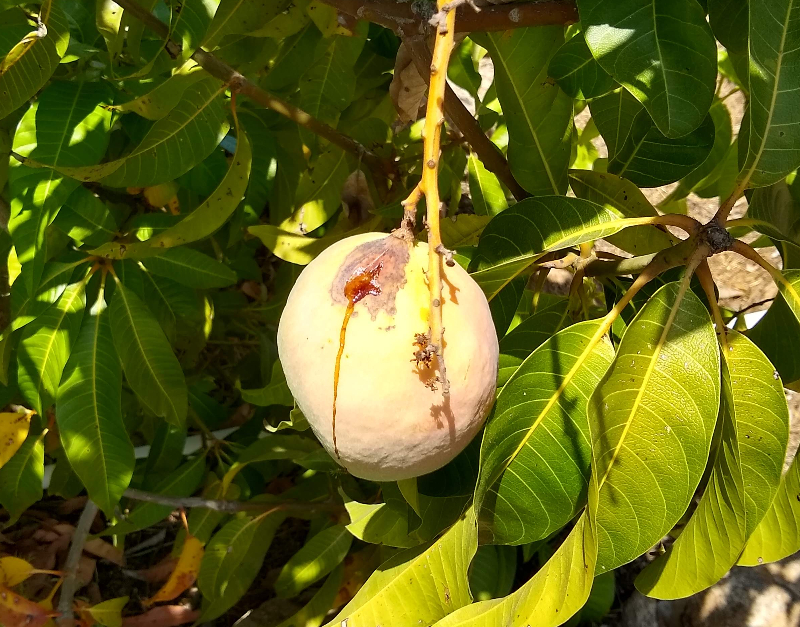
Where I shaded fruit, the damage was null.
Shade vs. no shade
With some shade cloth, no damage was seen on healthy avocado trees.
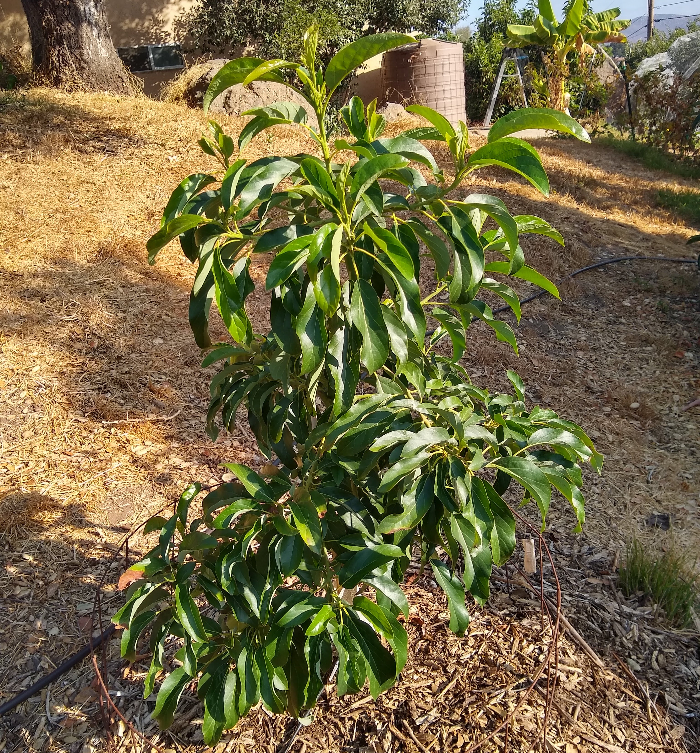
But without shade cloth, even healthy avocado trees showed some sunburn, especially to new leaves.
Tropical plants vs. temperate plants
We might think that plants from tropical or subtropical climates would be tougher in heat compared to plants from temperate climates, but that is not always the case. For example, during this heat wave, banana leaves showed some sun bleaching; in contrast, apple leaves did not.
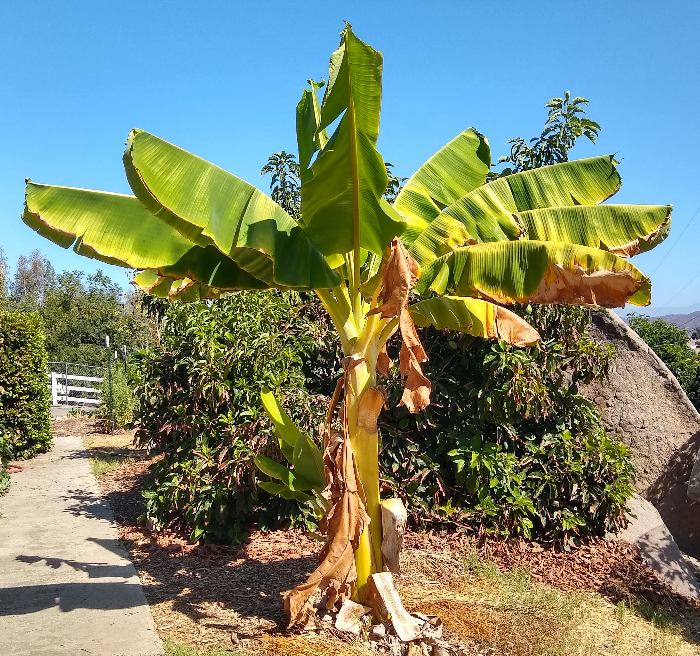
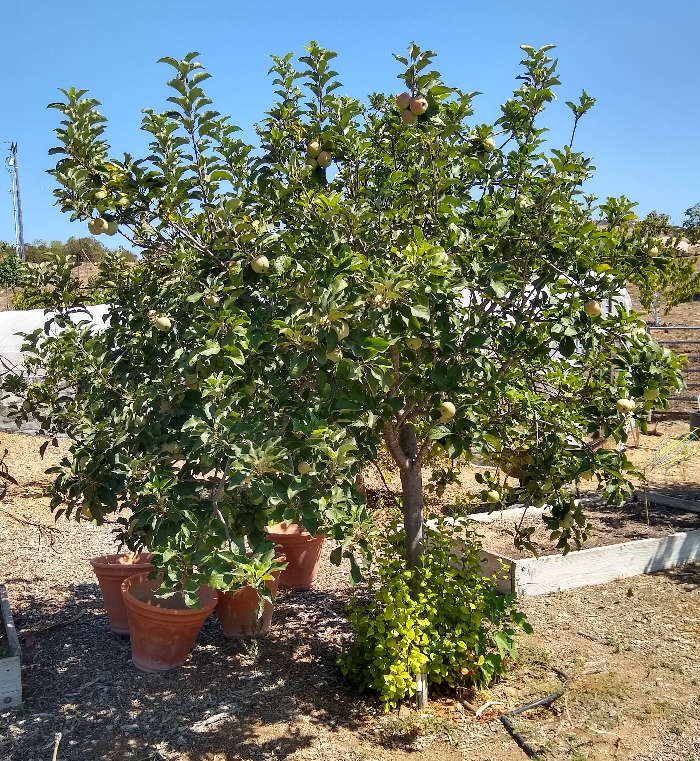
Then again, guavas showed themselves to be very tough in heat.

Mango leaves also showed themselves to be tough, tougher than avocado, banana, and litchi leaves. Even new (red) leaves on mango trees in my yard and elsewhere had almost no damage.
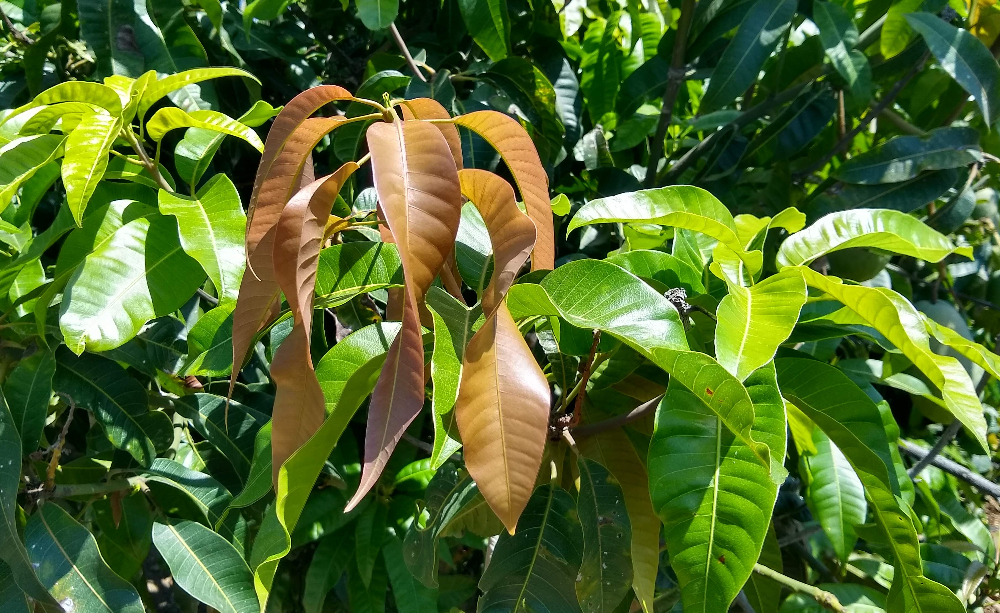
Heavy crop vs. light crop
Fruit trees with heavy crops incurred more damage than those with light crops, on average. I noticed this with avocados and litchis and pluots in particular. This happened mostly because the weight of the fruit bent down branches, which exposed the branches (and sometimes the fruit) to sunburn.

Trees with heavy crops need more of our attention going into a heat wave. Long before the heat, we should thin fruit or cut back the ends of laden branches that are bending to horizontal. Paint those branches. Shade them. Spray water on them to cool them during the heat. Whatever is practical in the situation.
What I would do the same
I did a few things right and a few things wrong related to this heat wave. One thing I did right was not shade my zucchini plant. Shading it would have been a waste of time and resources.

The most important thing I did right was pay attention to the weather forecasts, notice the heat predicted, and irrigate all of my plants before it arrived.
I can’t stress enough how effective this practice is: Irrigate before the heat starts.
In past heat waves I’ve made the mistake of waiting to water some plants during the heat, that is, after the heat has arrived and become high enough for plants to show stress. It allows for damage that a “pre” irrigation can prevent.
If you’re close to the beach, then heat will never get high enough to cause the kind of damage seen on the Hass avocado tree above, but your trees can still be stressed to a lesser extent by September heat waves, and pre-irrigation can prevent this.
What I would do differently
One thing I messed up during this heat wave was my placement of shade and overhead sprinklers on certain plants. I forgot how southern the angle of the sun had already become at this time of year. I placed my protection too overhead whereas I should have placed it more on the south sides.
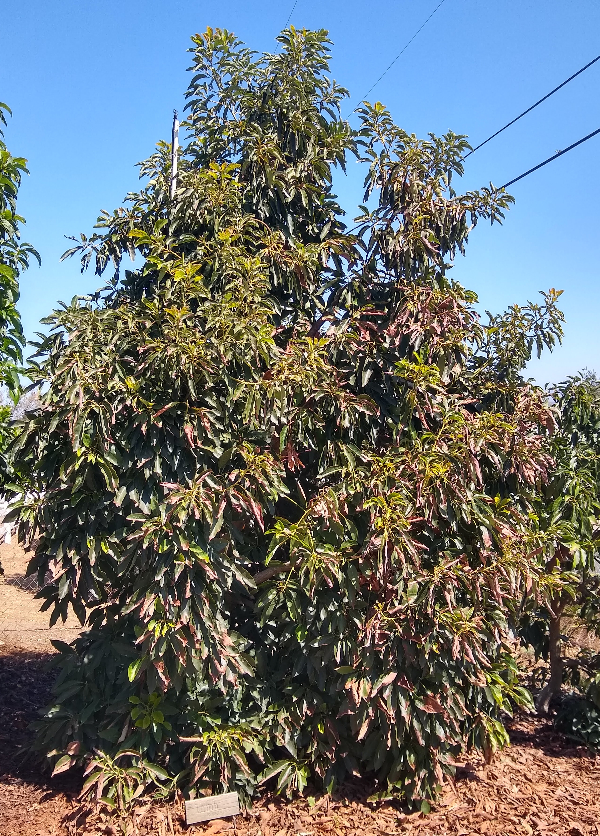
When is a heat wave done?
The heat wave is over, right? In my yard, twenty miles inland, the days are down to the mid-80s. I was at the beach yesterday, and the onshore breeze was strong; the ocean water was even warmer than the air.
But damage from a heat wave continues to reveal itself for weeks after the air temperatures have dropped. Don’t count your chickens just yet.
Fruit from certain trees might still drop, for example. After the July 2018 heat wave was finished and the temperature dropped on July 9, I saw no fruit drop on avocados. I thought I had pulled my trees through without fruit loss. But by July 25, lots of fruit was on the ground. In fact, my large Hass tree had shed a few hundred young avocados and was left holding zero.
I’ll be watching my corn over these next few weeks. Some were tasseling during the heat, and I’m pretty sure their pollen was killed. Will I still get some ears from the later bloomers?
Your support keeps my Yard Posts coming and the ads away. Thank you.
All of my Yard Posts are listed HERE




#1. Thanks so much for the information. I do not have knowledge (essentially you might say none). Please describe what a shade cloth is and whether it stops the fruit from ripening and how to place it. For example, place it directly on top of the leaves? Build a frame?
#2. I have three fuyu persimmon trees here on the Central Coast. The fruit get sun burn which we can cut off, but I’d rather not. I have seven other fruit trees, too, on my 10,000 sq. ft. lot.
#3. I am interested in overhead sprinkling. Where do I buy this and what is it called? I looked it up to no avail.
#4. Is everyone’s black mission fig tree not producing much this year?
My black mission fig was just as productive as usual, but the fruit ripened before they reached the normal size. I usually have very large fruit well into October. I had small fruit which were done by the first week in September. I live just outside of Palm Springs. It was brutal this summer.
My black mission fig tree has the same issues, the last year with a nice good size fig crop was 2022. 2023 I only had a few that became full size, and this year, while there were at least a hundred or more potential figs, only a handful of them got to around 1 inch or so in diameter, and of course, before they fully ripened, the squirrels stole them. Usually, like in 2021, they would ripen about 5 to 10 at a time, and I could get at least half of them before the birds and squirrels, and they were full size, nearly golf ball in size. This and last year, one or two at a time, and gone before fully ripe.
In fact currently, they are mostly still about the size of a marble, and usually I get 10 to 15 per week, starting 9/1. Not sure if it’s the weather or what, but pretty sad….
But on the other hand, a 3 year old tiger fig, that is only about 4 ft in height had 20 full size figs, and I actually like the taste a bit more than the black mission, they have almost a raspberry flavor to them.
Hi Christine,
There are some photos of shade cloth over avocado trees in this post and over tomatoes in this post.
Here is a post about overhead sprinkling.
Today, I put 4 tomato starts in my small greenhouse. It has 24 hr/day grolights, and heat if needed. I have zucchinis started, and just planted Mexican grey squash seeds in pots. Just found how good those taste fried. Two of my young avocado trees, Hass & WurtzLittle/cado, really took a sun beating, but will survive. I was surprised at my Lamb/hass, as it is supposed to hide its fruit. Not this year. Many are sun burnt. The last but greatest of my tomato plants just gave up the ghost. It really kept us with much fruit. I’m 91, so it’s hard to cover trees with shade cloth.
Hi David,
I am impressed by your gardening at 91 and hope to follow in your footsteps.
I put shade cloth only over small avocado trees, those shorter than me. For taller trees, I use evaporative cooling with overhead sprinklers. The sprinklers take some work to set up but are then easy to operate; it’s just the turn of the faucet valve.
Hi Greg,
I’m confused. I had always thought/read that it was a bad thing to hose down trees/plants in high heat due to some sort of prism/magnification effect of the sun on the droplets on the tree/plant leaves. Therefore, I’ve never done it. But, I’ve thought about it…. Have you ever heard of or experienced this?
Many thanks!
Cara in Pasadena
Hi Cara,
I don’t know who made up the idea that wetting leaves during heat can burn them, but I’ve never seen it happen. I spray the foliage of lots of different plants to cool them during heat and I’ve never seen a negative result except that if you do it with water that has high levels of solids, then you might see some white crusty film left on the leaves afterward.
Perhaps some enterprising younger than I person might take on an at home business forming shade cloth into pockets to slip over sun-exposed avocados.
Thank you for the reply. I spray the trees by hand when the temp. gets over 100 degrees F. But that becomes a big chore. They make small plastic bags out of mesh fabric that looks like window screen to protect the fruit from pests. I wish they made mesh shade bags for avocados, as well. I have formed shade cloth around some fruit but that is quite a chore. The ‘cado tree that held up under the sun best in this heat wave (114 F) was a Sir Prize. Not a single sign of burn.
Thanks for the report, David. Was it the foliage of the Sir-Prize that held up best? Or does your Sir-Prize tree have fruit and it protected the fruit from sunburn well?
My Sir Prize tree is part way down my steep slope. The big rain we had washed out my steps and paths, so I haven’t been able to see it up close to check it for fruit. It is a young tree but probably has a few hidden avocados behind its heavy foliage. It is not hard to see that not a leaf withered, unlike the others about the same age. My Gwen is large and in a place I was able to sprinkle it often during the heat wave. It did well and maintained all its fruit.
The heat wave wasn’t terribly bad here in Santa Barbara, and I was pre-emptive about making sure my trees were well irrigated. My large Hass is still dropping fruit in October, which is very unusual. When I rode my bike through Carpinteria yesterday I did see some small green fruit on the ground in a couple places, so maybe this year is just dragging out a bit in terms of young fruit drop. There was a comment above regarding noting future avocado fruit drop, I’m wondering how this panned out.
Hi Matt,
That’s what I’m seeing too. This year is dragging out in terms of young fruit drop. Maybe it’s because of late summer and early fall heat although that heat wasn’t really felt in places like Carpinteria compared to inland. My trees have continued to drop later than usual.